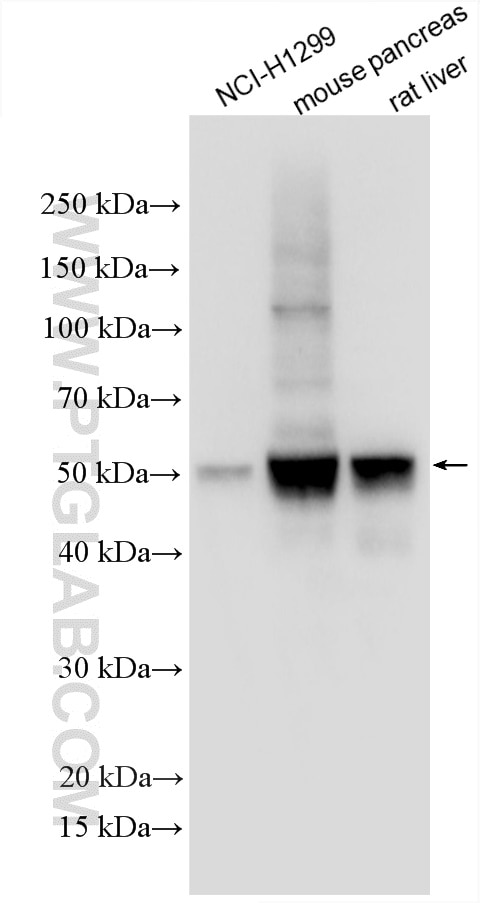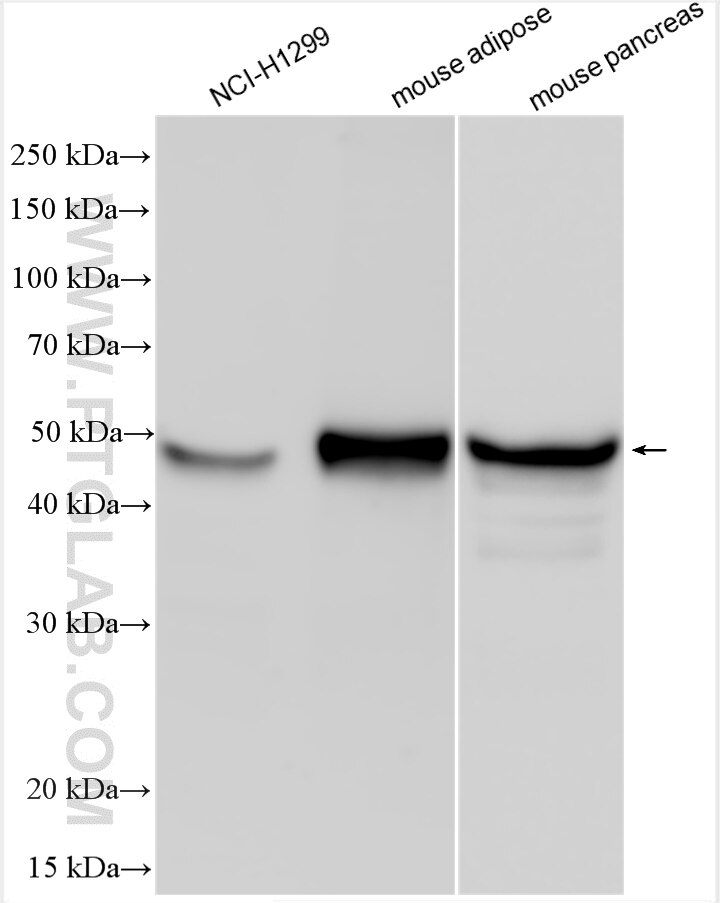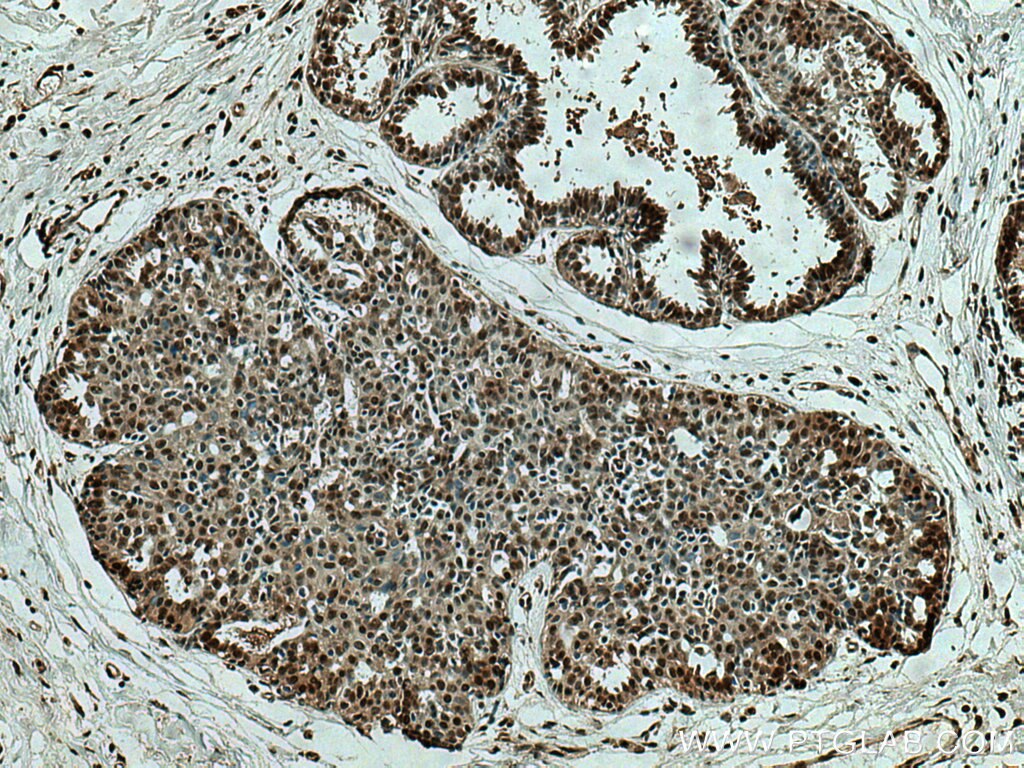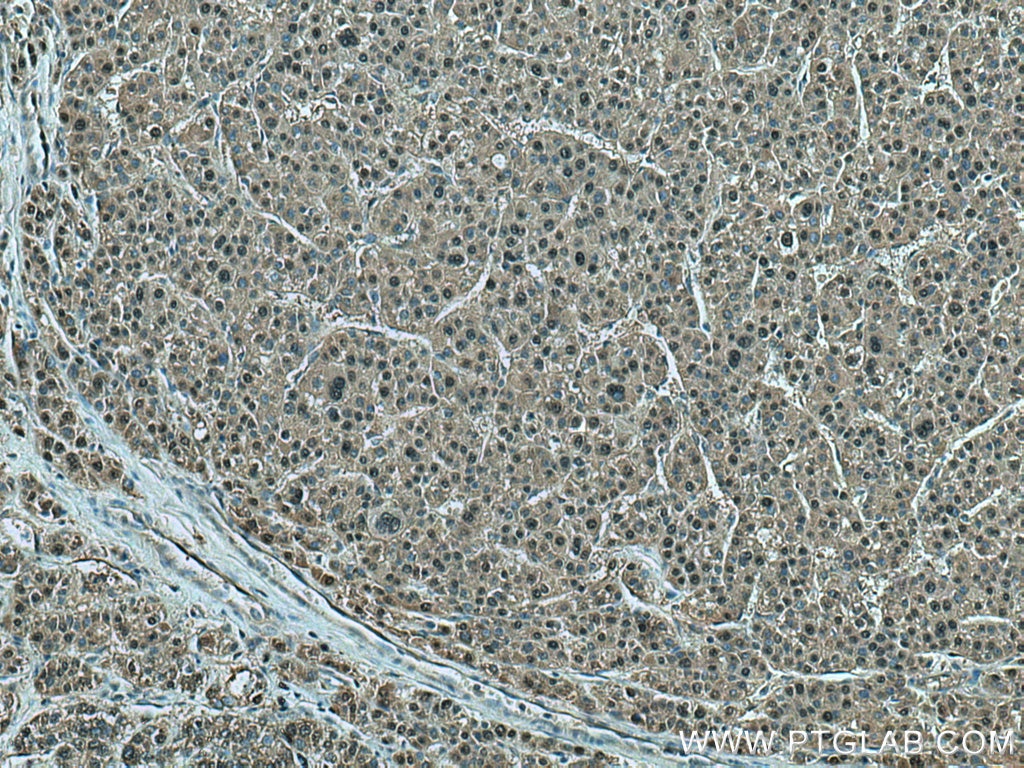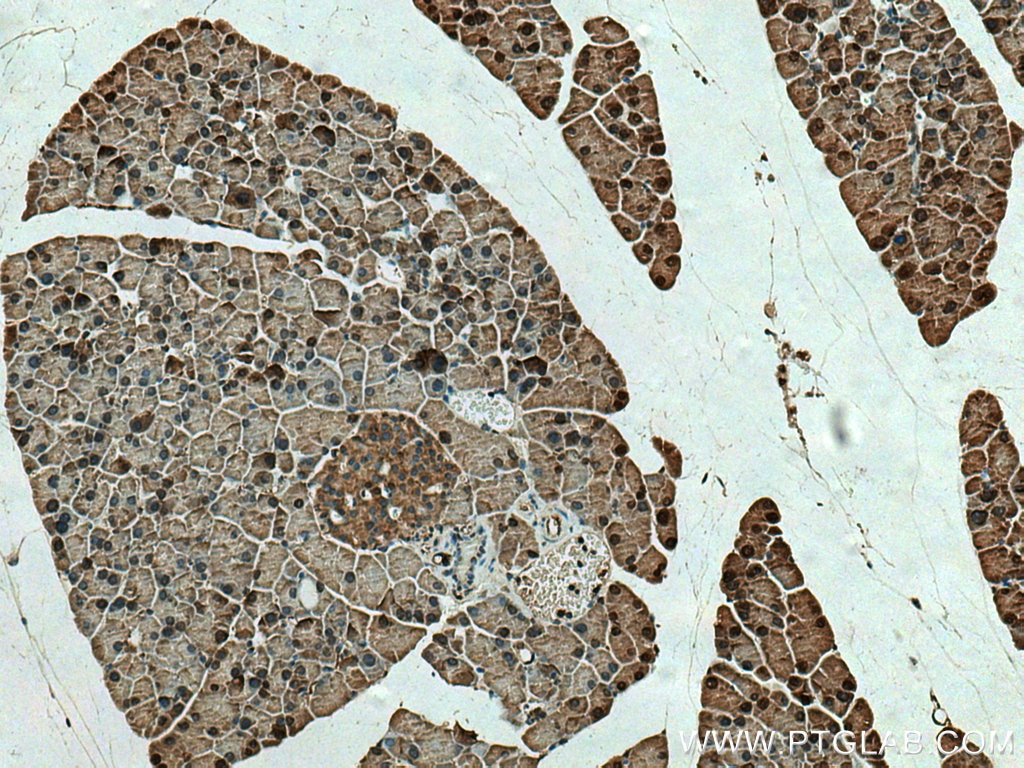Anticorps Polyclonal de lapin anti-SEPHS2
SEPHS2 Polyclonal Antibody for WB, IHC, ELISA
Hôte / Isotype
Lapin / IgG
Réactivité testée
Humain, rat, souris
Applications
WB, IHC, ELISA
Conjugaison
Non conjugué
N° de cat : 14109-1-AP
Synonymes
Galerie de données de validation
Applications testées
| Résultats positifs en WB | cellules NCI-H1299, tissu adipeux de souris, tissu hépatique de rat, tissu pancréatique de souris |
| Résultats positifs en IHC | tissu de cancer du sein humain, tissu de cancer du foie humain, tissu pancréatique de souris il est suggéré de démasquer l'antigène avec un tampon de TE buffer pH 9.0; (*) À défaut, 'le démasquage de l'antigène peut être 'effectué avec un tampon citrate pH 6,0. |
Dilution recommandée
| Application | Dilution |
|---|---|
| Western Blot (WB) | WB : 1:1000-1:4000 |
| Immunohistochimie (IHC) | IHC : 1:50-1:500 |
| It is recommended that this reagent should be titrated in each testing system to obtain optimal results. | |
| Sample-dependent, check data in validation data gallery | |
Applications publiées
| WB | See 5 publications below |
| IHC | See 1 publications below |
Informations sur le produit
14109-1-AP cible SEPHS2 dans les applications de WB, IHC, ELISA et montre une réactivité avec des échantillons Humain, rat, souris
| Réactivité | Humain, rat, souris |
| Réactivité citée | Humain, souris |
| Hôte / Isotype | Lapin / IgG |
| Clonalité | Polyclonal |
| Type | Anticorps |
| Immunogène | SEPHS2 Protéine recombinante Ag5255 |
| Nom complet | selenophosphate synthetase 2 |
| Masse moléculaire calculée | 47 kDa |
| Poids moléculaire observé | 47-50 kDa |
| Numéro d’acquisition GenBank | BC016643 |
| Symbole du gène | SEPHS2 |
| Identification du gène (NCBI) | 22928 |
| Conjugaison | Non conjugué |
| Forme | Liquide |
| Méthode de purification | Purification par affinité contre l'antigène |
| Tampon de stockage | PBS with 0.02% sodium azide and 50% glycerol |
| Conditions de stockage | Stocker à -20°C. Stable pendant un an après l'expédition. L'aliquotage n'est pas nécessaire pour le stockage à -20oC Les 20ul contiennent 0,1% de BSA. |
Informations générales
SEPHS2 (Selenophosphate synthetase 2), a selenophosphate synthetase, catalyzes the conversion of selenite and adenosine triphosphate (ATP) into selenophosphate. SEPHS2 is the rate-limiting enzyme that converts selenite to selenocysteine, a key substance in the synthesis of many selenium proteins such as glutathione peroxidase, thioredoxin reductase, and formate dehydrogenase (PMID: 40750759, 31695102).
Protocole
| Product Specific Protocols | |
|---|---|
| WB protocol for SEPHS2 antibody 14109-1-AP | Download protocol |
| IHC protocol for SEPHS2 antibody 14109-1-AP | Download protocol |
| Standard Protocols | |
|---|---|
| Click here to view our Standard Protocols |
Publications
| Species | Application | Title |
|---|---|---|
Mol Cell PRDX6 dictates ferroptosis sensitivity by directing cellular selenium utilization | ||
Biomaterials H2Se-evolving bio-heterojunctions promote cutaneous regeneration in infected wounds by inhibiting excessive cellular senescence | ||
EMBO Mol Med Breast cancer secretes anti-ferroptotic MUFAs and depends on selenoprotein synthesis for metastasis | ||
Front Med (Lausanne) A glycometabolic gene signature associating with immune infiltration and chemosensitivity and predicting the prognosis of patients with osteosarcoma | ||
Nat Struct Mol Biol PRDX6 augments selenium utilization to limit iron toxicity and ferroptosis | ||
Cell Death Dis METTL5 regulates SEPHS2-mediated selenoprotein synthesis to promote multiple myeloma survival and progression |
